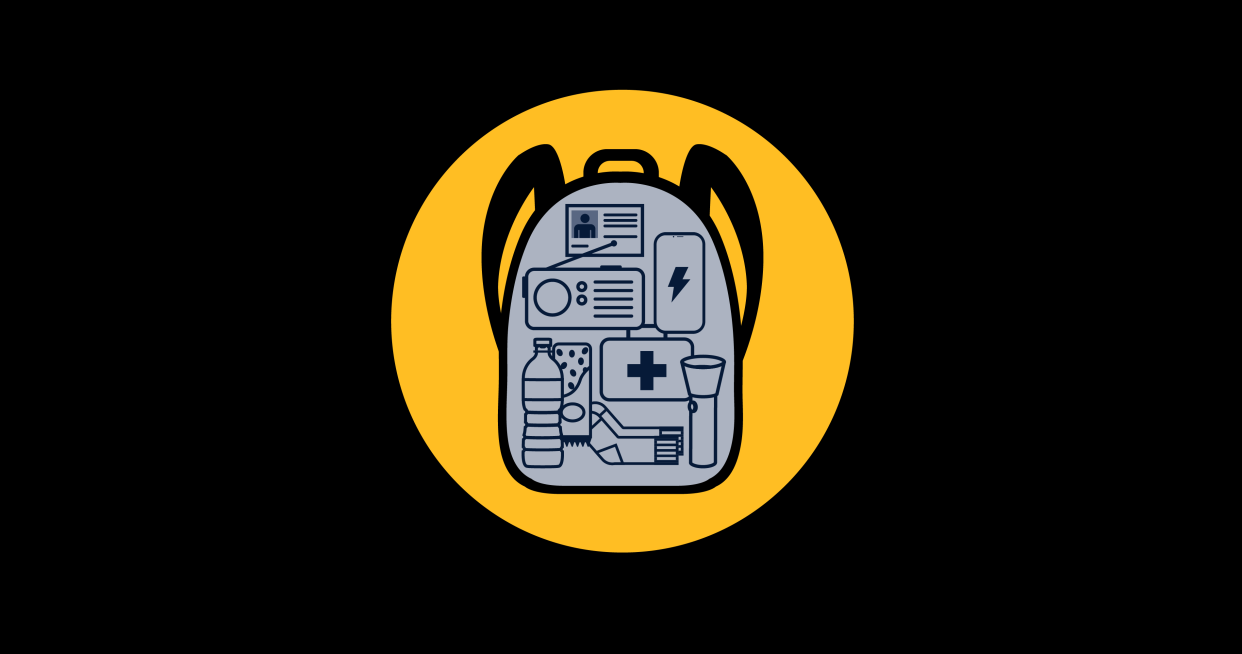Oklahoma storm shelter checklist: How to prepare, what to pack in a tornado go-bag

With Oklahoma's spring storm season in full swing, it's time to ensure your storm shelter is ready for the worst-case scenario.
Here's what you need to know to prepare your storm shelter and go-bag in case you need to take shelter during a tornado.
Oklahoma storm shelters: Prepare now for severe weather
The Oklahoma State University Extension office has some tips for getting your storm shelter ready for tornado season.
Clean out your storm shelter, including clearing any pests, removing fire hazards and sealing any openings to ensure pests can't get in.
Make sure your shelter does not have any leaks, and if water is getting in, repair any cracks or divert water away from the shelter entrance.
Keep cases of water and non-perishable food items in sealed containers.
Keep an emergency kit stocked with flashlights, extra batteries, folding chairs, first aid kits, medications, diapers and other needs specific to your family.
Be ready to bring stuffed toys or blankets to comfort small children.
Create shelter-in-place plans
The City of Oklahoma City does not have any public storm shelters. According to the City, this is because of the danger of driving to a shelter during severe weather.
"Many deaths attributable to tornadoes are attributed to being in a vehicle," according to the City of Oklahoma City. "Traffic congestion from hundreds or thousands of other residents trying to get to public shelters could have tragic consequences."
Instead, residents are encouraged to shelter in place.
Pick a safe place with few windows and doors to shelter in. Stay inside your shelter location until officials say the danger has passed.
In that area or another designated place, store an emergency kit with supplies that will last up to two weeks. Dried and canned food, water, prescription medications, a first-aid kit, household cleaning and disinfectant supplies, and personal hygiene items should be on hand. Supplies can be kept in a large plastic container and stored in a designated place for easy access.
If you have a portable generator for power outages, never run it inside your house or connected garage. Always keep it outside. Carbon monoxide – a colorless, odorless, poisonous gas – is dangerous and kills more than 150 people a year.
Making disaster plans for your pet, too
Pets should never be left behind during an emergency. They are likely to get lost, injured, or worse. Creating a pet emergency kit ahead of time will help.
Have a pet carrier for each pet, with your pet's name and contact information printed on the carrier. Have at least two weeks' worth of food and water, litter for cats, and poop bags for dogs.
Make sure to have copies of pets' medical records, which include vaccination status for rabies and other diseases. It's a good idea to practice an evacuation including your pets so everyone knows what to do.
What to do in a tornado warning
If a tornado warning is issued for your area, take shelter immediately, whether that's in your storm shelter, basement or an interior, ground-level room.
The most dangerous places to be are outside, in a vehicle or in a mobile home.
It's also best to keep shoes on in case of debris after a storm, and have your pets on leashes.
Prepare a go-bag: Gathering supplies
A go-bag is usually a small, lightweight backpack you can grab in a moment's notice on your way out the door. It should include personal items, toiletries, food, and water.
This is how you set up your kit:
What type of bag?
Pick something small, portable, and lightweight. A lightweight suitcase with wheels might work as well, but remember, you could be running while carrying this bag!
Essential items for cleanliness and lung protection:
Basic electronics:
Use your electronics only when necessary. Keep your phone handy in case you need to report a life-threatening emergency. Try to avoid phone use to keep lines available for emergency responders.
Personal items:
Layer clothes that can be easily added or removed, depending on temperature. It's best to be prepared for all types of weather. Include toiletry items, backup eyeglasses, bug spray, matches, a pocket knife or multipurpose tool, and a first-aid kit including any prescription drugs.
Have emergency cash and change on hand in case of a widespread power outage in which credit cards won't work. And don't forget keys to your house and vehicles.
Water and food:
Bottled water is a must. You should have at least a day's worth of food and water, enough for each person. Nonperishable foods, such as granola or energy bars, are good since they are small and compact.
Copies of important paperwork:
Keep photocopies of important household paperwork such as proof of address, driver's license, insurance, adoption papers, or naturalization certificates. Include copies of your Social Security cards, medical records, and credit card information. They should be stored in a waterproof bag.
Be sure to check out the Red Cross Emergency Library for safety checklists and more information.
This article originally appeared on Oklahoman: Oklahoma storm shelter checklist: How to prepare, pack tornado go-bag
